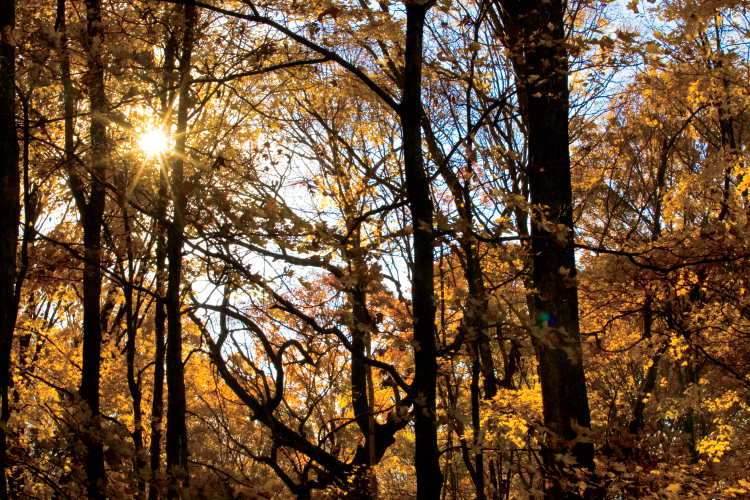Home > Tennessee > Tennessee Crops & Livestock > Enduring Tennessee Forests
Enduring Tennessee Forests
In partnership with: Tennessee Department of Agriculture

Tennessee’s trees are in good hands. Celebrating 100 years in 2014, the Tennessee Department of Agriculture’s Division of Forestry is working as hard as ever to protect and enhance the state’s forests.
“The anniversary is an opportunity to look back on our accomplishments,” says assistant commissioner and state forester Jere Jeter. “But it’s also an opportunity to look forward to the challenges ahead. Half of the state of Tennessee is forested land, and we want it to stay healthy and productive.”
One of the main challenges facing the division is the issue of aging forests. The Division of Forestry has come up with Plan 2020: Harvest Plan for Sustainable State Forests, which is designed to create healthier state owned forests by establishing sustainable harvest levels while diversifying age classes.
Jeter says that trees, like all living things, get older and old trees eventually fall. To keep forests healthy and productive, it’s important to have a mix of tree age classes.The plan works to ensure a continuity of age classes in the state’s forests, with most trees as middle aged, and an equal balance of older and younger trees. As trees become more mature, they can be used as a resource for a number of products.
The plan also contains strategies to protect forests for wildlife, recreation and other benefits they provide to the community such as clean air and water. With 15 state forests in Tennessee – a total of 168,000 acres – the plan’s main purpose is to make sure that they are still healthy and productive for years to come.
One way the plan will be implemented is through an increased number of regeneration harvests. This is the process of opening up the forest to give enough light to the forest floor, allowing seedlings to grow.
“Our forests are dominated by oak and hickory trees, and they both require a lot of light for seedlings to grow,” says Jeter.
However, he adds that the division wants to make sure that they’re not removing more from the forests than what is growing. Currently, forests are growing nearly twice the volume as what is being removed, and they want to keep it that way.
The new plan states that more timber will be harvested with a cap on removals at 70 percent annual growth. That means that less volume will be cut than grows, but the harvest rate will help diversify the age classes by creating younger trees.
According to a forest inventory conducted across the state, much of Tennessee’s forests are shifting to older stands of trees. So, along with executing the plan to manage aging state owned forests, Jeter says that the division will also provide assistance to private landowners who face similar age-class issues.
“Our state forests serve Tennesseans by providing demonstrations of sustainable forest management, and we are all fortunate to have these natural treasures,” he says. “The implementation of this plan will only improve their health for the benefit of future generations.”



